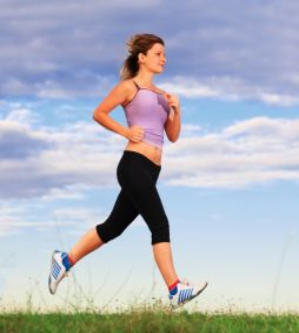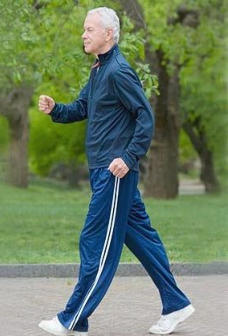

Information for the General Public
We
are
generally
less
active
now
than
in
the
past.
This
is
because
newer
technologies
are
making
our
lives
easier
and
we
are
getting
lazier.
We
move
around
less
and
burn
off
less
energy
than
people
in
the
past.
Research
suggests
that
many
among
us
spend
more
than
seven
hours
a
day
sitting
and
in
over
65s,
spend
more
than
10
hours
sitting.
We
have
all
been
told
repeatedly
that
to
stay
healthy
we
must
exercise
regularly.
Lack
of
exercise
is
associated
with
numerous
health
conditions,
including
obesity,
heart
disease, stroke, cancer, diabetes and osteoporosis.
Most
of
us
know
how
beneficial
exercise
is
for
our
health.
However,
it
is
surprising
how
little
many
of
us
know
about
the
dangers
of
being
unfit.
The
number
of
overweight
people
is
growing
alarmingly
fast
all
over
the
world.
Department
of
Health
in
UK
describes
inactivity
as
a
“silent
killer”.
So
act
now if you are not already at it.
How
does
exercise
help?
To
improve
health
through
exercise
it
is
necessary
to
make
your
heart
beat
faster.
When
it
beats
faster
it
forces
more
blood
thereby
oxygen
to
every
organ
in
the
body.
This
is
one
of
the
reasons
why
the
whole
body
benefits
by
exercise.
There
is however a maximum safe rate at which a normal heart can beat. This will depend on your age. We will come to this later.
Muscles
and
Heart:
When
you
exercise
regularly,
you
strengthen
the
muscles
that
do
the
work.
To
supply
the
muscles
with
enough
oxygen
during
the
work
out,
the
heart
has
to
work
faster.
This
increased
work
load
(within
safe
limits)
will
strengthen
the
heart
muscles.
Keeping
the
heart
healthy
is
the
key
to
the
overall
benefit
you
gain
through
exercise.
Unfortunately, when you stop exercising all the benefit gained is slowly lost.
Kidney:
The
increased
blood
flow
through
the
kidney
helps
to
get
rid
of
unwanted
chemicals
(urea,
ammonia,
uric
acid
,
etc)
that are by-products of digested foods.
Brain:
Irrespective
of
age
increased
blood
flow
through
the
brain
improves
memory
and
learning
function.
It
will
also
delay
the onset of Alzheimer's in people who are prone to it.
Bone:
Regular
exercise
helps
maintain
stronger
muscles
and
bones
particularly
in
the
elderly.
Total
inactivity
results
in
weak
muscles and loss of minerals from the bone resulting in osteoporosis.
Immune System:
With regular exercise you generally become more resistant to infections.
Endocrine
System:
Exercise
has
a
beneficial
effect
on
the
glands
that
produce
different
hormones.
One
of
them
relates
to
diabetes
where
it
becomes
easier
to
control
blood
sugar
level.
People
with
type
2
diabetes
have
too
much
glucose
in
their
blood,
either
because
their
body
doesn’t
produce
enough
insulin
to
process
it,
or
because
their
body
is
resistant
to
insulin.
Exercise
helps
the
muscles
to
use
glucose
without
insulin.
What
this
means
is
that
through
exercise
the
blood
glucose
level
will go down whether you are insulin resistant or there is not enough insulin being produced.
Type
of
Exercise:
As
mentioned
earlier,
the
aim
of
any
exercise
is
to
increase
the
heart
rate
to
its
optimum
level.
You
can
do
this
by
a
variety
of
activity
like
jogging,
cycling,
swimming
or
brisk
walking.
Depending
on
your
age
and
your
physical
fitness,
you
decide
on
the
type
of
exercise
to
do.
If
you
have
never
exercised
before
it
is
best
to
start
with
simple walking, extending it slowly to 20 minutes a day.
To
stay
healthy,
adults
should
aim
to
achieve
at
least
3
hours
of
moderate
to
vigorous
physical
activity
every
week.
You'll
get
the
most
from
your
workouts
if
you're
exercising
at
the proper exercise intensity for your health and fitness goals.
Research
has
shown
that
interval
training,
ie
higher
intensity
exercise
done
for
short
bouts
(1
minute)
interspersed
throughout
your
workout,
is
well
tolerated,
even
by
those
with
certain
cardiac
conditions.
This
type
of
workout
is
very
effective
at
increasing
your
cardiovascular fitness.
Benefits of Regular Exercise & Exercising Safely

